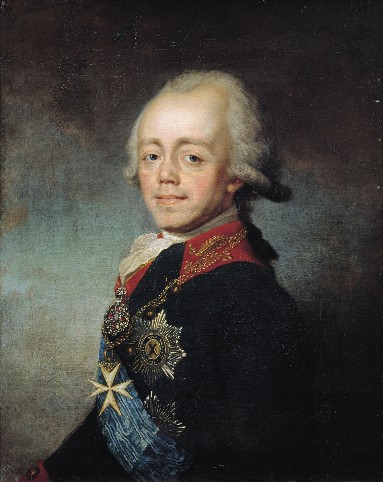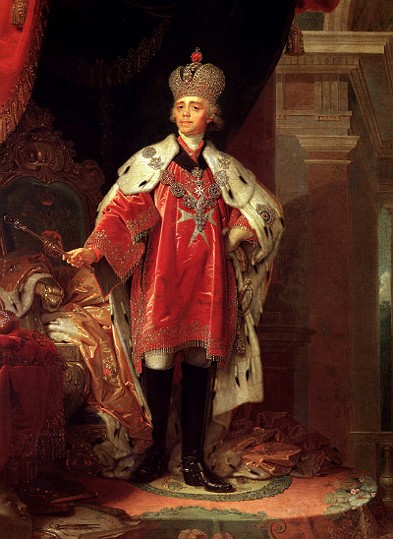Paul I
Paul I (Pavel Petrovich), b 1 October 1754 in Saint Petersburg, d 23 March 1801 in Saint Petersburg. (Portrait: Paul I.) Russian emperor from 1796 to 1801; son of Peter III and Catherine II and father of Alexander I. During his reign Paul facilitated the expansion of gentry landownership in Ukraine, where he gave hundreds of thousands of desiatins and some 150,000 state peasants to the gentry and, in December 1796, enserfed the hitherto free peasantry in Southern Ukraine. At the same time he limited corvée to three days a week and forbade the sale of household serfs and the breakup of peasant families. Paul reversed many of Catherine's reforms. In Ukraine he replaced the vicegerencies with gubernias, partially restored the court system that had existed in the Hetman state in 1760–70, and put an end to the persecution of the Uniate church. He also, however, increased bureaucratic control in local government, restricted the political and taxation privileges of the nobility, and introduced a brutal police regime, harsh discipline in the army, strict censorship, and the persecution of all and any free thinkers. As a result there was widespread popular discontent. Many peasant rebellions erupted, which were especially violent in the Ukrainian and neighboring Russian gubernias in 1798, and army officers and members of the nobility organized a number of conspiracies, notably the ‘Smolensk conspiracy’ of 1798, in which Ukrainians took part, and the guard regiments' conspiracy of 1800–1. During Paul's reign highly placed Ukrainians, such as Prince Oleksander Bezborodko, Dmytro Troshchynsky, Viktor Kochubei, and Andrii and Ivan Hudovych, were influential in government. Paul was assassinated by disgruntled nobles.
BIBLIOGRAPHY
Ragsdale, H. (ed). Paul I: A Reassessment of His Life and Reign (Pittsburgh 1979)
Oleksander Ohloblyn
[This article originally appeared in the Encyclopedia of Ukraine, vol. 3 (1993).]

